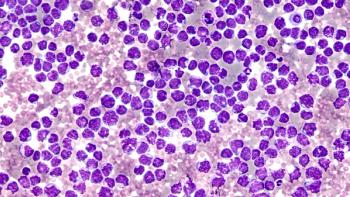
Global Trends Show Growing Impact of Low Physical Activity on Kidney Health
Key Takeaways
- CKD deaths and DALYs due to low physical activity rose by over 150% globally from 1990 to 2021.
- Women and low-SDI regions experienced disproportionately higher increases in CKD burden.
Women, older adults, and low-income countries are impacted most; researchers call for urgent public health interventions.
Chronic kidney disease (CKD) caused by low physical activity has surged dramatically over the last 3 decades, with deaths and disability-adjusted life years (DALYs) rising by more than 150% worldwide.1 The global analysis published in
Approximately 35.5 million people in the US have kidney disease, making it the fastest-growing noncommunicable disease in the country, the American Kidney Fund (AKF) estimates.2 To help prevent kidney disease, the AKF emphasizes the importance of several lifestyle modifications, including maintaining a healthy weight, following a kidney-friendly diet and fluid plan, getting tested for kidney disease, and being physically active.
Sharp Increases in Mortality and Disability
In 2021, low physical activity was linked to more than 40,900 deaths and more than 913,000 DALYs due to CKD globally, both significantly higher than in 1990.1 The age-standardized death rate rose from 0.42 to 0.50 per 100,000 people, while the age-standardized DALY rate (ASDR) climbed from 9.63 to 10.81 per 100,000. The estimated annual percentage change (EAPC) in deaths was 0.65%, signaling a steady upward trend.
Deaths due to CKD from physical inactivity increased by 197% over the study period. Women were disproportionately affected, with a 200% increase in deaths compared with 193% for men. In 2021, women accounted for more deaths (22,920) than men (17,990), and had a higher ASDR (9.63 vs 7.15 per 100,000).
Disparities by Sociodemographics
The burden was greatest in regions with a low socio-demographic index (SDI), who experienced a 103% increase in deaths and a 102% rise in DALYs. Although the EAPC of deaths in these regions slightly declined, women still saw a higher growth rate in burden than men. High-SDI regions had the smallest relative increases, but with a 234% surge in deaths, they still saw a significant rise, especially among men.
Middle-SDI regions reported a 218% increase in deaths, while high–middle-SDI areas saw deaths rise by 168%. These trends indicate that although more developed areas are seeing greater absolute increases, lower-income regions face escalating challenges without the same health care infrastructure to mitigate them.
Regional Trends: Americas Lead Growth, Europe Trails
Among continents, the Americas saw the most dramatic rise, with deaths increasing 282% and DALYs climbing 236%. The EAPC of deaths in this region was 1.70%, the highest globally. Africa also reported significant increases, particularly among women, with deaths rising 174%.
In Europe, the CKD burden rose more modestly, with deaths up 144% and DALYs increasing 76%. Although the burden among men grew faster in Europe, the overall increase remained lower than in other continents. Asia saw deaths rise 194%, with the burden spread evenly between genders.
China, home to nearly one-fifth of the global population, reflected similar patterns. CKD deaths due to physical inactivity increased 140% between 1990 and 2021. Men experienced a slightly higher growth rate than women, though women still accounted for more total deaths (102,720 vs 86,370 in 2021). The EAPC for China was marginally negative at –0.14%, suggesting a slowing rate of increase in recent years.
Age and Gender Differences
The study revealed stark age-related trends: CKD burden from inactivity was low in younger adults (25–54 years) but increased significantly after 55 years, peaking in those aged 85 years and older. Across all age groups, low-SDI countries bore a heavier burden than high-SDI nations, underscoring the impact of economic development on health outcomes.
Despite men having slightly higher mortality and DALY rates overall, women consistently saw higher absolute numbers, especially in low-SDI and African regions, pointing to sex-specific vulnerabilities that researchers suggested require tailored interventions.
“The global burden of chronic kidney disease attributable to low physical activity has increased significantly, especially in low-income regions, older populations, and among women,” the authors wrote. “There is an urgent need to promote physical activity and implement early preventive interventions, particularly in vulnerable populations.”
As sedentary lifestyles persist worldwide, experts emphasize that promoting even modest levels of physical activity could have a significant impact on preventing CKD and improving global health outcomes, especially as populations age and health care disparities widen.
References
1. Zhao Z, Mi J, Jin H, et al. Global trends in chronic kidney disease mortality and disability-adjusted life years attributable to low physical activity (1990-2021): a growing public health challenge. BMC Nephrol. 2025;26(1):215 doi:10.1186/s12882-025-04117-z
2. American Kidney Fund Medical Advisory Committee. Quick kidney disease facts and stats. American Kidney Fund. Updated February 11, 2025. Accessed April 29, 2025.
Newsletter
Stay ahead of policy, cost, and value—subscribe to AJMC for expert insights at the intersection of clinical care and health economics.













































